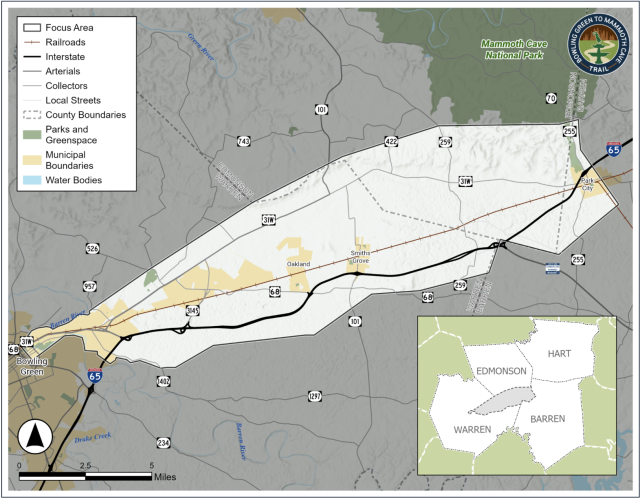TVA: Safeguarding forests, transmission infrastructure a ‘balancing act’
Published 8:00 am Tuesday, August 14, 2018
Seeking to balance electric reliability and environmental responsibility, the Tennessee Valley Authority is requesting public comments on how to manage vegetation along its 16,200 miles of transmission lines.
A public meeting will be at TVA’s customer service center in Bowling Green from 4 to 7 p.m. Sept. 4 to discuss the utility’s Programmatic Environmental Impact Statement draft, which details courses of action to handle trees, shrubs and other plants within the transmission line rights of way.
“What it all comes down to is eliminating potential hazards,” TVA spokesman Scott Brooks said.
Rights of way, or the land directly adjacent to the transmission line, usually extend between 100 and 2,000 feet wide. TVA said the majority of its rights of way are 75 to 200 feet wide and accommodate lines that carry between 26,000 and 500,000 volts.
The operation and maintenance of these rights of way often involve the chemical or mechanical control of vegetation, which can contribute to the loss of native plant species diversity and could create a continuous source of sedimentation into waterways, according to the U.S. Fish and Wildlife Service.
However, utilities must responsibly manage the vegetation on an ongoing basis to avoid fires and blackouts, according to Carl Zichella, director of western transmission at the Natural Resources Defense Council and a former member of the Department of Energy’s Electricity Advisory Committee.
“You don’t have to go crazy and cut down everything, but you do have to be realistic about managing the problem,” Zichella said. “We have to be sure we do that in a responsible way. There’s a balance there.”
To address this balancing act, TVA has prepared a draft Programmatic Environmental Impact Statement that outlines four options for guiding vegetation management in its transmission rights of way.
The first option is taking no action. This means the utility would only remove trees when they become an immediate hazard to the power line.
The next three options include an initial re-clearing of vegetation to varying degrees, including a low height clearing, a “meadow-like end state” in which tree maintenance would be assessment-based, and a buffer zone of compatible vegetation, along with compatible trees and shrubs actively maintained by others in the right of way. Each option will be compatible with the right-of-way standards.
“All of these options are designed to keep the power on,” Brooks said.
The second option, clearing to a low height, would likely have the most impact on current vegetative state and would be less expensive than careful pruning, which can be costly – TVA budgeted $15 million for its yearly vegetation management in 2017, and $14 million for vegetation management during fiscal year 2018 through 2020. Trimming “requires repeated visits and monitoring along 16,000 miles of transmission lines, and creates greater concern for outages caused by the vegetation,” Brooks said.
But on the other hand, ensuring that TVA meets its goal of zero vegetation-related outages could save money and lives – if the power goes out when someone is on life support or a heat wave hits, then people could die.
“It’s a big deal to keep these lines in operation,” Zichella said.
But it’s also a big deal to carefully manage the nearby vegetation.
“You don’t want to overdo it when you have fragile ecosystems,” Zichella said. “These kind of areas (like Kentucky forests) tend to be very rich in biodiversity … you could really harm the biota.
“People should hold (utilities) accountable to be sensitive about it.”
The utility began this process to update its vegetation management several years ago after first receiving a court order to do so. In August 2017, the U.S. District Court filed an injunction order requiring that TVA halt its transmission line right-of-way vegetation management practice – and only remove or trim trees if they present an immediate hazard to transmission lines – until TVA has prepared or published an environmental statement pursuant to the National Environmental Policy Act.
“At that time, we were ordered to conduct an environmental review of our vegetation management,” Brooks said.
What happens next will partially be determined by the public’s feedback on the Programmatic Environmental Impact Statement draft, which is online under the heading “Transmission System Vegetation Management Program” at www.tva.com/Environment/Environmental-Stewardship/Environmental-Reviews.
Through Sept. 24, citizens may comment online there, in person at a public meeting or in writing to Anita E. Masters, NEPA compliance project manager, 1101 Market St., BR 4A, Chattanooga, TN 37402 or by email to aemasters@tva.gov. Any comments received, including names and addresses, will become part of the project administrative record and will be available for public inspection.
“Any comments that we get, we will take those into consideration and will be included in the final version,” Brooks said. “This is intended to be a public process. We want feedback.”
– The Tennessee Valley Authority customer service center in Bowling Green is at 6945 Russellville Road.






